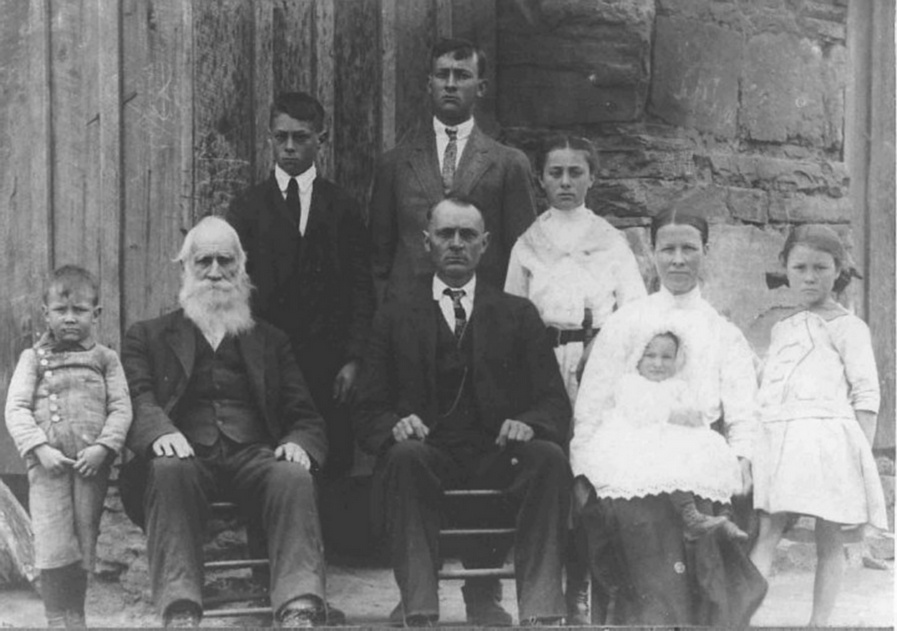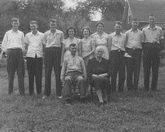|
Kate L. Turabian remains one of the most
influential individuals in the history
profession. Fifteen years after her
death in 1987, historians continue to use her
work daily. But she wasn't a
historian.
Instead she served as the dissertation
secretary at the University of Chicago from
1930 to 1958. In 1937, her work to
provide systematic guidelines for citing
sources became her first edition of A Manuel
for Writers of Term Papers, Theses, and
Dissertations based on what is often called
the "Chicago Style." Historians still
call this citation system "Turabian" in honor
of the secretary who helped organize source
information into a consistent solution.
The posthumous sixth edition continues to
provide excruciating detail for formatting
every kind of footnote, endnote, bibliography
and reference list item for everything from a
basic book to technical reports and even the
United States Constitution.
The use of a single style within the
profession provides consistency. In
academic journals, all articles submitted
already contain identical style footnotes and
bibliography material, simplifying
editing. And authors know what is
expected with simply the word "Turabian"
without needing further explanation.
Other styles have been adopted by other
professions. But over the decades, the
history profession has honed the use of
Turabian so that in the hands of a master, such
as my thesis director Dr. William Anderson,
footnotes can become a work of art
communicating far more simple publication
data. In fact, Turabian has become so
crucial to the process of history that Dr.
Anderson will probably never forgive me for
what I am about to say.
The format really doesn't matter.
Simply including the information is the crucial
part.
I emphasize this because the majority of
genealogists do not include any source
information or so little information as to only
tease the reader. How much of a problems
is this? I have talked to many
professionals about our GenWeb Project and
requested suggestions. From academic
historians, public historians, archivists and
even anthropologists absolutely everyone has
raised the problem of an overwhelming lack of
source information among family
historians.
I believe there are a couple of very valid
reasons why family history has been rather on
the light side when it comes to keeping track
of sources. The big reason is
technology. In the 19th century as
genealogy really came into its own in the
United States, access to printers was
extremely limited, not to mention the sources
themselves. Today, anyone with internet
access can publish unlimited genealogy
research, with source information, for anyone
else with Internet access on Ancestry.com at
the very least, or a more developed WebPage, or
a self-published book with ease.
Transportation of any level of speed,
computers, and the basic photocopiers were all
unavailable to our 19th century
predecessors. They didn't have the
support of the relatively new breed of academic
historians who agonize over details of methods
and sources. Believe it or not, we've
only been around for a little over a
century.
So instead of creating databases of
thousands of documented relatives, a lady might
only document a specific line back to another
name already included in the Daughters of the
American Revolution register so she could
demonstrate her eligibility for
membership. Single page forms developed
to assist in this process. With limited
space, these left little room for source
information which became an almost cryptic list
with little clue as to what information came
from which source. Through these and many
other factors, genealogy developed largely
without an emphasis on detailed source
information and wit a lot of faith in other
researchers.
 ^Back
to Top ^Back
to Top
That was then. This is the
twenty-first century. And the majority of
researchers who have been in this for awhile
will occasionally pop out with a statement to
the effect of "that is what I have in my
notes. I'm not sure where it came
from. That was before I started keeping
track of sources." No one realizes just
how massive family research will quickly grow -
far beyond the capacities of human
memory. Beyond the lessons of experience,
there are essentially three reasons why source
information is such a vital part of any
research.
Acknowledge the work
of others
No researcher begins completely from
scratch. Instead, researchers build on
previous research. Some of this research
is fantastic. Some of it leaves a lot to
be desired. Some of it is down right
bad. But it all represents a lot of hard
work by someone. And even in the
problematic works, some useful information can
be found. Citing good solid research lets
readers know you did your homework.
Citing the less reliable sources lets them know
there is still more work to be done. But
most importantly, these citations recognize the
efforts and contributions of others in the
present work.
Provides
credibility
Citations tell readers whether or not they
can trust the information presented.
Sometimes they can't. Honestly providing
sources shifts any problems in interpretation
to the source. And letting readers know that a
totally new fact is from an obscure document
that you discovered adds an impressive
"wow." Source information also provides
the context for your research by showing how
the creator of the source is connected to
events, what biases or special information may
be included.
Guides the next
researcher
No research is ever complete. A
single individual simply does not have time to
seek out every source and pursue every
angle. With time such an overwhelming
factor, you will benefit from future research,
and future researchers will thank you, if you
provide information about which sources have
been located. This information can
prevent duplication of work as well as suggest
which sources may have more information.
Keep in mind that often that future researcher
is also the present researcher. Years
from now - or even just days - you will likely
be the primary beneficiary of your own good
source information.  ^Back
to Top ^Back
to Top
So what information do you need to include?
Keeping in mind the uses of source information
provides some basic guidelines:
Creators
This includes authors, transcribers,
translators, editors and other individuals
involved in determining what information is
included in the source. Usually unspoken,
behind these names, historians often recognize
their relationships to the information that
help readers understand how reliable that
information may be.
Description
Titles, dates, and even clarification of
what kind of information such as a letter not
only identify a sources, but help readers
understand how close the source is to the
events described and what kinds of information
can be included. In some cases, authors will
include comments about the sources and its
usefulness in addition to basic
information.
Access
Information
How can your reader find this
sources. For a basic book this will
include simple publication information and page
numbers. For a one of a kind manuscript
this can include the name and location of the
archives as well as a detailed accession number
obtained from the archivist. Microfilm
sources listings will often include reel
numbers. These are particularly helpful
in large collections such as the Revolutionary
War Pension and Bounty land Warrant files
where the reels number in the thousands.
The more details the better in saving future
researchers time locating the
information.
Beyond these basic principals, the exact
format will depend on what you are writing and
who you are writing for. If you need
inspiration, Kate Turabian has provided a lot
of suggestions for all history research -
including your own. If you want to see
just how helpful her work can be, look through
the editions of the Journal of Cherokee
Studies edited by Dr. Anderson and his
articles in particular. The detailed
citations demonstrate the benefits this high
quality of source information can provide and
examples we can all strive to achieve.
- Linda Hoxit Raxter,
originally posted March 31, 2003
^Back
to Top
|






